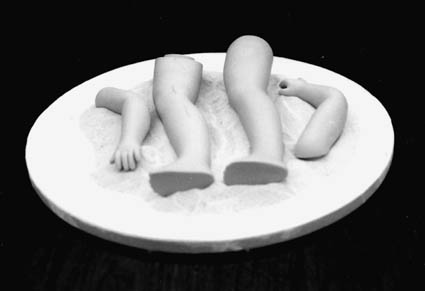 |
|
|
Kiln Pointers
|
|
|
Using Silica Sand in Ceramic Firings, Part Two |
CONTENTS Using Silica Sand in Ceramic Firings, Part Two Reader Response: Comments on sand Announcement: New Paragon online videos and audios ------------------- Last week Mario Miguel Echevarria of Longmont, Colorado shared information on silica sand in the kiln. Silica sand, as with kiln wash, will ruin heating elements on contact. Keep the sand out of the element grooves. Do not let the sand spill into the switch box louvers. 1) If you use a fan to lower the firing room temperature, do not aim the fan directly at the kiln. The breeze can stir the silica sand inside the kiln. This could ruin glazed pieces and scatter sand into the element grooves. It is okay to use a down draft kiln vent such as the Orton Vent Master. When correctly installed, the vent does not create enough airflow to stir up dust. 2) Do not place sand on the kiln bottom. Use it only on the shelves. The sand can work its way between the firebricks. 3) Pour the sand onto the shelf before lowering the shelf into the kiln. If you pour the sand on the shelf inside the kiln, dust particles are more apt to float in the firing chamber, scattering onto your pieces. 4) Do not pour the sand onto the shelf from a large bag. Use a scoop instead. A scoop stirs up less dust. 5) Use the sand sparingly on the shelf for most projects. Use a thicker layer if you are concerned about glazes running. 6) Keep the sand 2” – 3” away from the edges of the shelf. If the sand falls off the edges, it may filter down into the element grooves or onto glazed ware on the shelf below. 7) As you lower the shelf into the kiln, hold the shelf level. If it tilts, the sand could fall off the edges. 8) When unloading the kiln, remove the shelf and the ware together. If the ware is too heavy to lift out with the shelf, then hold the piece away from the kiln before rubbing the sand off the bottom of the piece. If you hold the ware over the shelf as the sand falls from the piece, the particles could fall into an element groove. 9) Vacuum the kiln after every firing with a soft brush attachment. Be sure to vacuum the element grooves. READER RESPONSE Charlie Spitzer of Cave Creek, Arizona wrote, “Regular play sand does NOT work as a separator. I used it under some pieces, and the sand fused to my shelves, making them useless.” Maggie Jones of Black Mountain, North Carolina wrote, “I mix my sand (or grog) with dry alumina hydrate to aid in the refractory properties and insure the granules do not stick together.” -------------- ANNOUNCEMENT: NEW PARAGON ONLINE VIDEOS AND AUDIOS We have just added videos and audios to our website: You can download the mp3 audio files and listen while you work. The videos cover kiln maintenance, and operation of the 3-key Sentry Xpress controller. We will adding more titles soon. We've loaded low- and high-resolution versions of each video so that you can watch them even if you have only a dialup connection. The small button to the left of the volume control under the video screens will show the video in full-screen mode. Please let me know if you have any problems accessing these files. I also welcome your suggestions. We chose the mp3 format for our audio interviews, because mp3 players are easy to find. My son, Patrick, just replaced his cell phone with a $30 Nokia. It was the least expensive model he could find, yet even that one plays mp3 files. They load from the computer through a cable. Thank you, With best wishes for the weekend, Arnold Howard Paragon Industries, L.P. – Better Designed Kilns 2011 South Town East Blvd. Mesquite, TX 75149-1122 Voice: 972-288-7557 & 800-876-4328 / Fax: 972-222-0646 ahoward@paragonweb.com / www.paragonweb.com |
|
|

|
|
|
|
|
“Custom and standard Kilns and Industrial Furnaces for ceramics, pottery, heat treating, enameling, |
||||
